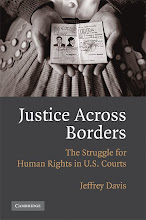Domestic Minor Sex Trafficking
Sex
trafficking is often described as a modern day slavery, where individuals are
coerced or forced to perform commercial sex. In the case of minors under the
age of 18, any engagement in commercial sex is considered to be human
trafficking, regardless of coercion.
With
today’s advancements, many people are aware of the crisis that is human
trafficking. However, many do not realize the overwhelming fact of the matter
that our youth are becoming the most vulnerable group of this phenomenon being
referred to as Domestic Minor Sex Trafficking (DMST). In an article “Domestic
Minor Sex Trafficking in the United States,” Kimberly Kotrla describes those at
highest risks for becoming victims of DMST, as well as why this terrifying
issue remains prevalent in our society.
Like
any other issue in our society, lawmakers soon realized the importance of
creating legal ramifications for these crimes through legislation such as The
Victims of Trafficking and Violence Protection Act (VTVPA). Most experts
suggest “there are currently at least 100,000 DMST victims in the United States
(estes & weiner, 2002; Smith, 2008), with up to 325,000 more at risk for
becoming such victims (estes & weiner, 2002; Hughes, 2007; U.S. Department
of Justice, 2007a).” This idea of the overwhelming number of victims at risk,
stems from the fact that research shows that there majority of women involved
in prostitution were introduced to the commercial sex industry before reaching
the age of 18. It is often easy to blame victims for this path they seemingly
chose to embark on. However, according to research, the culture in which we
live may be partially responsible for the way the sex trafficking industry
thrives. In countries with major commercial sex markets, such as the United
States, there is a “culture of tolerance,” molded by this demand to maintain
the way we glamourize prostitution and pimping. At a very young age, our
children internalize this fact and in turn fall victim to the risk factors that
lead to DMST.
Unsurprisingly,
this overwhelming experience often has significant psychological and traumatic
effects on the child. In many cases, the trafficker is related to the victim allowing
them advantages such as shelter, money, and food. These “rewards” create a
sense of belonging that many victims may have lacked in the childhood
previously. In order to understand the depth of these psychological issues, it
is important to understand the child’s perception of their identity as a
victim. Those that can identify their trafficker as a perpetrator were less
susceptible to trauma and depression.
References
Gozdziak, E., Bump, M., Duncan, J., MacDonnell, M., &
Loiselle, M. B. (2006). The trafficked child: trauma and resilience. Forced
Migration Review, (25), 14-15.
Kaplan, D., & Kemp, K. (2015). Domestic minor sex
trafficking: An emerging health crisis. Brown University Child &
Adolescent Behavior Letter, 31(7), 1-6.
MAKE A DIFFERENCE!

